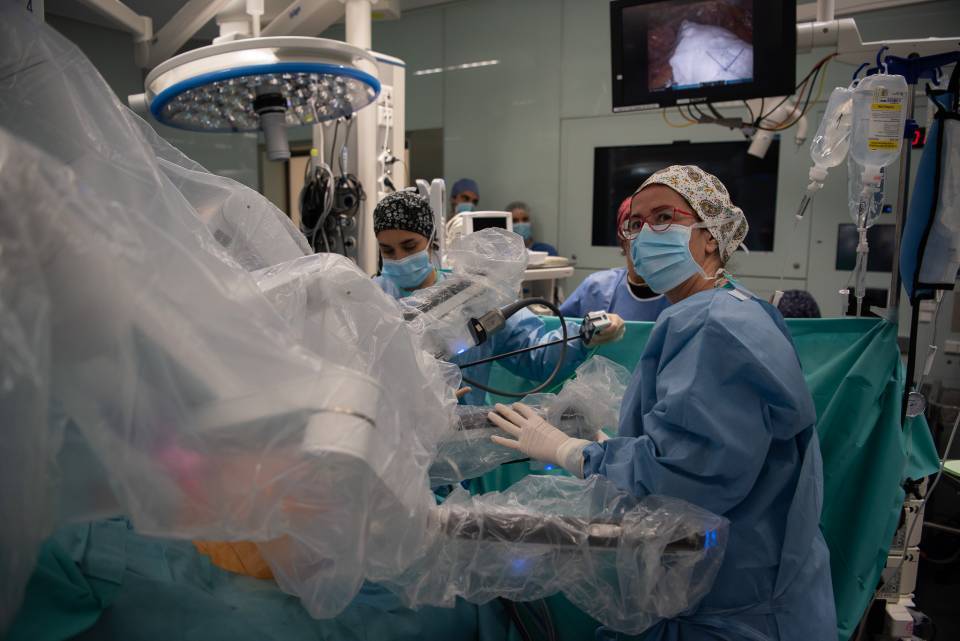Dr. Virginia Hernández-Gea, hepatologist at Clínic in the Hepatic Hemodynamics Unit and researcher in the Regulation of liver microcirculation in cirrhosis and hepatic vascular diseases group at IDIBAPS and CIBERehd, has been part of the international expert panel that developed this document, published by the European Association for the Study of the Liver (EASL) in the Journal of Hepatology.
What is TIPS and what is it used for?
TIPS is a minimally invasive technique that creates an artificial connection within the liver between the portal vein and the hepatic vein. This shunt reduces portal pressure and is mainly used to treat severe complications of cirrhosis, such as esophageal variceal bleeding and refractory ascites (persistent accumulation of fluid in the abdomen that does not respond to standard treatments). The procedure has become a fundamental therapeutic tool in managing complications associated with portal hypertension and represents a major advance in improving the quality of life and prognosis of people with advanced liver disease.
However, its application requires careful patient selection and optimized post-procedure management.
What do the new TIPS guidelines provide?
The publication of the EASL guidelines marks a turning point, as for the first time there is a reference document that sets out clear and updated criteria on when and how to indicate TIPS, what tests to perform before the intervention, contraindications, the technique itself, and subsequent follow-up. Until now, recommendations on TIPS were dispersed in other documents on portal hypertension or cirrhosis, lacking a comprehensive and consensus-based guideline.
The document places special emphasis on the following points:
- Patient selection criteria: The guidelines precisely define ideal candidates for TIPS, considering factors such as the severity of liver disease, presence of comorbidities, and risk of post-procedure complications.
- Standardization of the technique: Recommendations are provided on the most appropriate TIPS technique in different clinical scenarios, including the use of covered stents and measurement of the portosystemic pressure gradient.
- Post-TIPS management: The guidelines emphasize the importance of long-term follow-up to detect and treat complications such as hepatic encephalopathy and stent stenosis.
- Multidisciplinary integration: The need for a collaborative approach between hepatology, interventional radiology, and other specialties is highlighted to ensure the success of the procedure.
Dr. Hernández-Gea points out that "these guidelines will provide clinicians with a valuable tool to make informed decisions about the use of TIPS, improving quality of life, reducing complications associated with portal hypertension, and increasing survival in patients with cirrhosis."
The guidelines will be integrated into the EASL mobile app, thus enabling healthcare professionals to quickly and easily access recommendations, figures, and tables, in line with current trends in healthcare digitalization.
Article reference:
European Association for the Study of the Liver. EASL Clinical Practice Guidelines on TIPS. J Hepatol. 2025 Apr 1:S0168-8278(25)00066-2. doi: 10.1016/j.jhep.2025.01.029.




